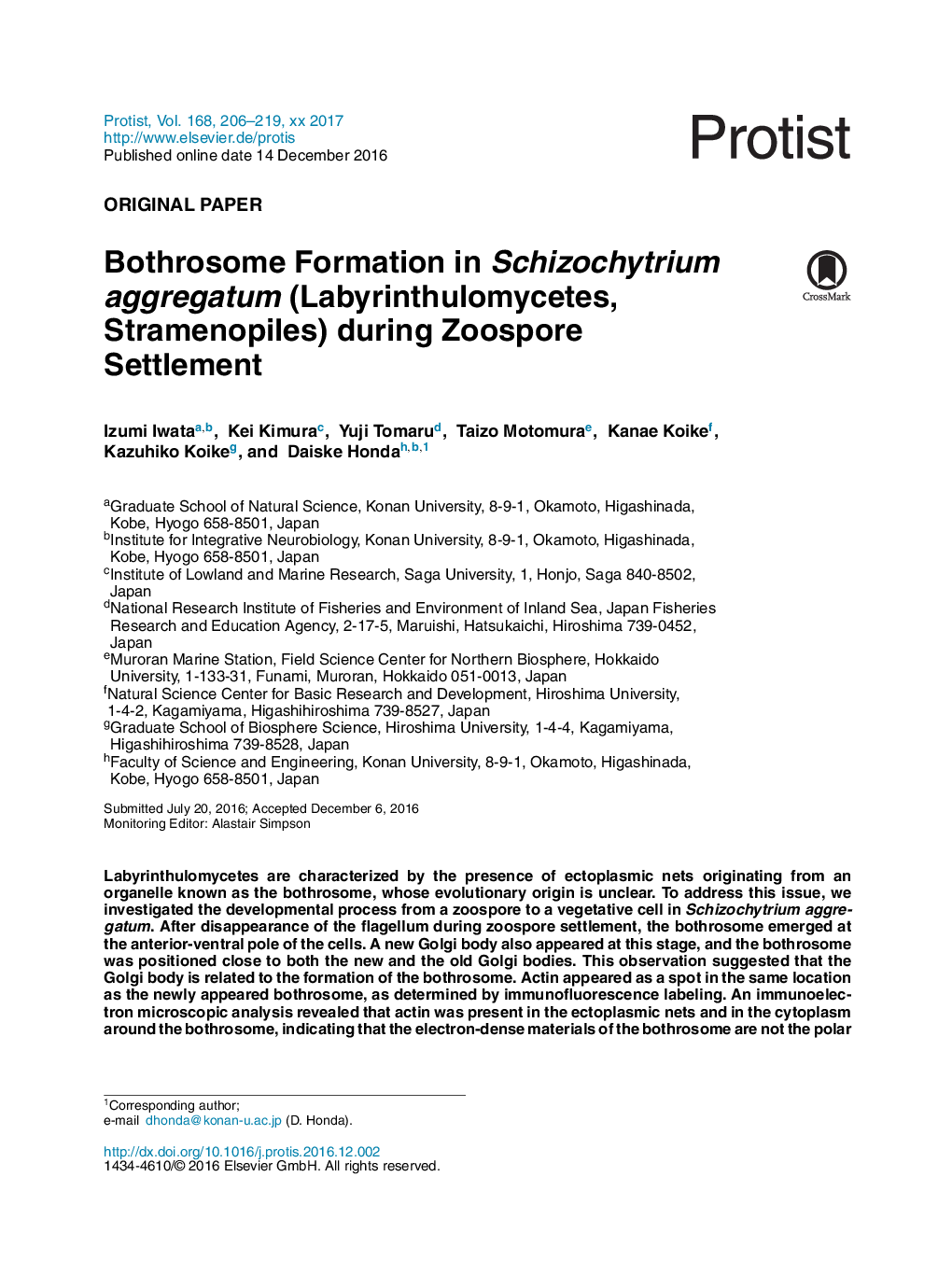| Article ID | Journal | Published Year | Pages | File Type |
|---|---|---|---|---|
| 5518976 | Protist | 2017 | 14 Pages |
Labyrinthulomycetes are characterized by the presence of ectoplasmic nets originating from an organelle known as the bothrosome, whose evolutionary origin is unclear. To address this issue, we investigated the developmental process from a zoospore to a vegetative cell in Schizochytrium aggregatum. After disappearance of the flagellum during zoospore settlement, the bothrosome emerged at the anterior-ventral pole of the cells. A new Golgi body also appeared at this stage, and the bothrosome was positioned close to both the new and the old Golgi bodies. This observation suggested that the Golgi body is related to the formation of the bothrosome. Actin appeared as a spot in the same location as the newly appeared bothrosome, as determined by immunofluorescence labeling. An immunoelectron microscopic analysis revealed that actin was present in the ectoplasmic nets and in the cytoplasm around the bothrosome, indicating that the electron-dense materials of the bothrosome are not the polar center of F-actin. This suggests that actin filaments pull the endoplasmic reticulum to the bothrosome and induce the membrane to become evaginated within ectoplasmic nets.
